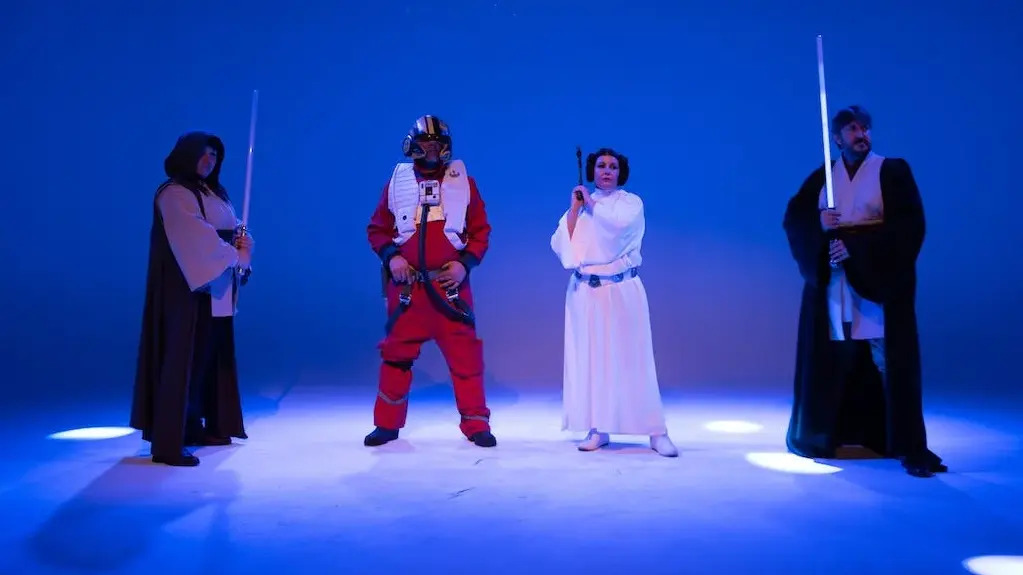Science
Rewriting Human History: Fire Was Sparked Hundreds of Thousands of Years Earlier
06 January 2026

Wikipedia defines Jedi religion, as one of the so-called new religious movements whose origins we find in the “Star Wars'' universe. However, this is a rather dubious truth. The mythological creed of the Jedi is as old as the world's oldest mythologies, and it was through them that it found expression in George Lucas' trilogy. Let’s look for these sources.
George Lucas is a man who seized the collective imagination of world pop culture in 1977. This year, as we already know today, the fourth part of the “Star Wars” saga appeared at the cinemas. The clashes between the Dark and Light Sides of the Force and the appearance of mythological characters in this iconic series probably would not have happened at all if it were not for Joseph Campbell. He is one of the most outstanding theoreticians of myth, a world-renowned American religious studies specialist, researcher, and cultural anthropologist.
Lucas has never made any secret of the fact that he owed a huge intellectual debt to Campbell, whose mythological works formed the basis for the creation of the “Star Wars” universe. The director invited an American anthropologist to a special show of the saga. In the book “The Power of Myth,” we can read that Joseph Campbell even relished discovering ancient themes and mythological threads in the movie. During the visit, Joe, delighting in Luke Skywalker’s exploits and dangerous adventures, spoke with particular vigor about the fact that Lucas “breathed a completely new and powerful spirit” into the classic hero story.
Skywalker, Darth Vader, Han Solo, Obi-Wan Kenobi, and almost all of the characters featured in “Star Wars” are contemporary emanations of the hero’s topoi created by the mythological imagination. Lucas’ cosmic saga is a story that fits into the formula of a road, a journey, danger, and the challenge of struggling against oneself. It is easy to find analogies between the adventures of “the Star Wars” protagonists and the challenges faced by the brave men described by Homer in the Iliad and the Odyssey.
The boldness and impetuousness of Achilles, or the cleverness of Odysseus, brings to mind the rowdiness of Han Solo or the insight of Obi-Wan. Luke Skywalker, like the Scandinavian hero Sigurd, the killer of the dragon Fafnir, takes revenge on his persecutors, servants of the “dark side of the Force.” Courage, bravado, desire for revenge, to defend the victims, to punish the bad ones – these are the basic and at the same time obligatory attributes of heroes of all time. This applies to all latitudes as well as cultures.
However, before a daredevil becomes Superman, they must face themselves up and defeat internal evil. In the hour of trial, one must not disappoint their friends. This principle is also followed by Han Solo, who comes to Luke’s aid during the final attack on the Death Star in “A New Hope” movie (Episode IV of “The Star Wars”). In addition to that, the key issue for the mythological topos is the fall and rebirth of one of the main characters. In the star saga, it is none other than Darth Vader.

The main narrative axis in the “Star Wars” universe is the theme of the antithesis of “light” and “darkness.” It is a topic that regularly occurs in the cosmopolitan Gnostic movement, which was organized through the manifestation of the syncretic spirituality of the ancient world. This is how pre-Christian-Jewish and Hellenistic-pagan religious sects were formed. The central idea of this sensitivity was to seek knowledge (from the Greek word gnosis – knowledge), which was to enable the release and rebirth of man in the full spectrum of spiritual experience.
Let’s recollect Anakin Skywalker, a child found on the planet Tatooine, who was supposed to be a potential savior of the Galaxy. The one who will restore the balance of power. He is the tragic hero. We get to know him as the “hope for salvation,” watch his spiritual development, and admire his heroic exploits, until we finally witness his fall into darkness and rebirth in the form of the sinister Darth Vader. Lucas’ protagonist, like Odysseus, is a toy in the hands of supernatural forces, torn by the light and dark side of the force – let’s risk gnosis. Just as on the infernal Lucifer, who carried the light, so there were also great expectations pinned on young Anakin.
The prince of darkness, lost by his pride, falls and has no hope of redemption for himself, and above all, he does not want it. However, Lucas reaches here for an element of Eastern mythology, also exploited by Karl Gustav Jung in his philosophical anthology. It is a motive in which there is no pure evil and pure good. Contrary to extreme Gnostic dualism, Lord Vader is not plunged into boundless darkness. There is a spark of goodness smoldering at the bottom of his heart, which his son Luke ignites, allowing him to redeem himself.
This theme is the complementarity of Yin and Yang, well internalized by Western culture. For the Euro-Atlantic world, this central concept of Chinese philosophy and Taoism expresses the conviction that in every evil act, there is a little good, and in the good, there is a grain of evil. Life is about building a balance between these opposing forces. This is nothing more than the creed of the Jedi Order. There is no doubt that Lucas made the most of the philosophy of the Far East, and Master Yoda is a Buddhist monk immersed in constant contemplation.
We recommend: Mental Slavery: Who Shapes European Culture?
The galaxy, in which the characters from the Star Wars universe experience their adventures, is oversaturated with the Force. The origins of such a scenario can be found not only in mythological representations, but it is also in an indispensable element of natural philosophy – from antiquity to the era of romanticism. According to this idea, nature exists because of the vital force that joins it together and sustains it in continuing.
This is an ancient philosophical concept called Hylozoism. Lucas adds to it the ability to control the Force and to manage the material world through it. However, reaching for such a tool requires spiritual transformation, training, concentration, self-discipline, and a pure heart. It is an elite path of initiation, the requirement of which is to deny what is obvious to the average person.
This can be read as a nod to Plato’s “myth of the cave”, which paradoxically marked the beginning of an era in philosophy, in which the style of mythological thinking was abandoned. To maintain the complementarity of good and evil, the candidate for the Enlightened One, or Jedi Knight in Star Wars, can choose an easier way to achieve the Force by moving to the dark side. We already know this, the fall of the superhero, Lucifer’s rebellion against God, making darkness a source of power. As Friedrich Nietzsche said,
“The desire to become stronger in every center of strength is the only reality – not mere behavior, but assimilation, the desire to become a master, to become more, to become stronger.”
The power of myths lies, among other things, in the fact that they provide universal topoi that not only affect the imagination of man but also can be perfectly adapted to different contexts and situations. Lucas’s stellar saga is a wonderful proof of how these primeval universes are still in great shape. Modern man changes mythological patterns in various ways. Updating their formula to the time in which they live, looking to the myth for comfort, explanation, justification and fun.
Sometimes, in our ignorance, we break open doors, talking about modern heroes as if their stories had not been told. One of Campbell’s works is entitled “The Hero with a Thousand Faces”. He analyzes the multidimensionality of heroic epic poems, showing the timelessness of these visions. No wonder these mythical figures dressed as Jedi knights have their modern followers and fans. The Palingenesis of the myth itself is a star saga, a journey of heroes whose faces do not age and are still up to date.
Translation: Marcin Brański
Science
06 January 2026



Zmień tryb na ciemny